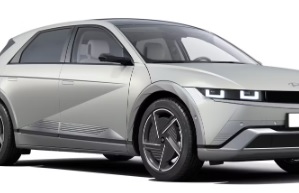 From electric vehicles to mobile phones, Li-ion batteries are used across many industry sectors. However, as they near the end of their life, the battery cells can rapidly degrade – known as cliff-edge – not only causing inconvenience but also potentially posing serious risks to users’ safety.
From electric vehicles to mobile phones, Li-ion batteries are used across many industry sectors. However, as they near the end of their life, the battery cells can rapidly degrade – known as cliff-edge – not only causing inconvenience but also potentially posing serious risks to users’ safety.
It is crucial, therefore, that innovators work on improving battery reliability and safety by developing technologies that are able to monitor cell behaviour and predict failure events accurately. The ability to predict how a cell will degrade could allow the designs of batteries to be changed during testing phases.
Ultimately, this could extend the lifetime of batteries. It is hoped that next generation Battery Management System (BMS) technology will improve battery life and mitigate safety risks.
BMS
Regardless of battery type, cell performance will decline over time – even rechargeable batteries have to be replaced eventually. Rapid end of life degradation results in unwanted side effects that vastly reduce functionality.
For example, many people experience this phenomenon with phone batteries – the more frequently phones are charged and discharged, the more battery health declines and eventually it stops being fit for purpose, as the charge cannot be held for long enough to be practically useful. Due to complex chemical reactions inside the cell, when a Li-ion battery experiences cliff-edge, it will fully degrade, and this cannot be reversed.
Rapid degradation of Li-ion batteries is not only inconvenient, it can also be a threat to safety. Most household batteries will leak or corrode if they fail, however the lithium within a Li-ion battery is flammable and these batteries can experience thermal runaway. This has the potential to lead to self-sustaining fires that are challenging to put out due to the ongoing chemical reactions, and can even cause explosions – which could present a huge risk for drivers of battery electric vehicles (BEVs).
Given the potential risks associated with cliff-edge in Li-ion batteries, innovators of BMS technologies have been exploring ways to make battery performance more reliable and predictable.
Acoustic wave
Among the technologies being trialled is the use of acoustic wave technology to measure the chemical state of Li-ion battery cells and extend their lifetime.
Sention Technologies Ltd, for example, are a market leader in this sector. The Beijing Institute of Technology has patented a Li-ion battery lifetime prediction method [CN111610448B] based on digital twin technology that provides a virtual representation of the battery. The digital twin is able to track signs of ageing and when combined with a machine learning model, can predict when a battery will degrade.
Life status
Another use of innovative BMS technology is a patent application for predicting the life status of Li-ion batteries based on numerical simulation data [WO2018199434A1].
Developed by a team of Korean research scientists, an algorithm is used to monitor the battery whilst in use, comparing its performance to stored data. When an abnormal operation is detected, an alarm or replacement signal is provided to the BMS.
Similarly, the Purdue Research Foundation in Indianapolis has patented a smart battery system that uses sensor-based monitoring to check battery deterioration [US12107240B2].
Based on data received from battery cells, the system is able to predict when a failure event is likely and a control circuit is activated to prevent this from happening. While innovators are filing patents for solutions that monitor cliff-edge and degradation in Li-ion batteries, there isn’t yet a system available that is capable of predicting cell degradation taking account of multiple degradation mechanisms.
One particular difficulty with predicting cliff-edge is that it can be the result of several degradation mechanisms, and the interaction between such degradation mechanisms is difficult to model and therefore predict.
ICL
Since the problem remains unsolved, there is significant scope for further research and development. Imperial College London is using an open-source model to try and solve the problem of predicting cliff-edge by researching the interactions between multiple degradation mechanisms. It is hoped that improved BMS technology could help to prevent dangerous scenarios like thermal runaway.
Developers are aware that they could revolutionise battery management system technology if they identified a computational model that is able to account for all potential signs of battery cell degradation simultaneously. From an intellectual property perspective, tech leaders in this field could build and own a lucrative patent portfolio for advanced BMS technology, with considerable, cross-industry licensing potential.
Protecting BMS technology and prediction models can be achieved utilising a host of different intellectual property.
In some cases, software can be challenging to patent, however, new battery monitoring technology is inherently technical and generally more straightforward, which means patent applications are more likely to be granted. In the case of computational models, a combination of patents and copyright protection should be considered.
Li-ion battery technology
With so much commercial opportunity at stake for battery tech innovators, it’s advisable to seek professional IP advice at an early stage.
In a world where Li-ion batteries are already an essential part of daily life, those innovators that find a way of making them more reliable and predictable could revolutionise the batteries industry.
Dr Joanna Thurston (top), partner, and Andie McConnell (below), associate, are both patent attorneys specialising in battery chemistries and technologies at European intellectual property firm, Withers & Rogers.
See also: Viewpoint: Peace breaks out in robotic patents war?
 Electronics Weekly
Electronics Weekly





